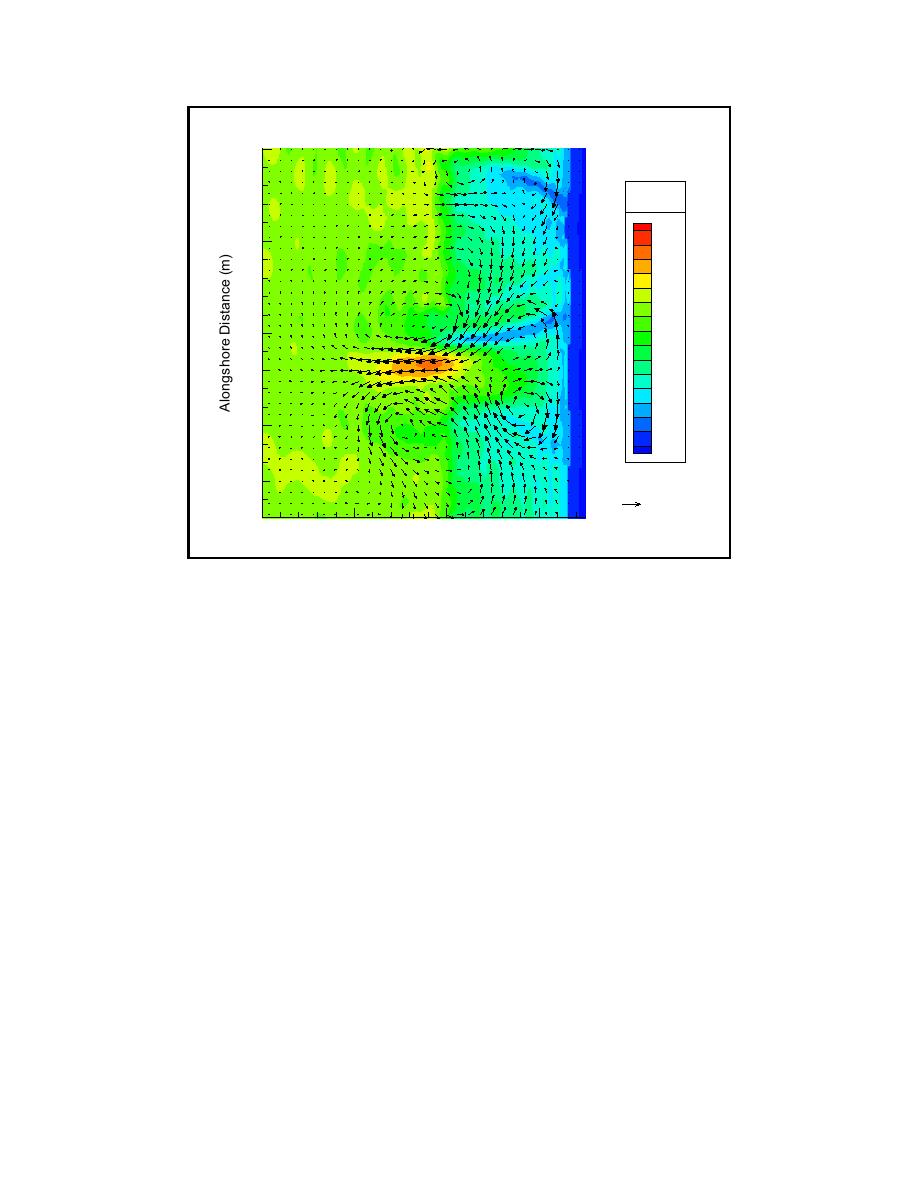
18
H/Ho
1.5
16
1.4
1.3
1.2
1.1
1
0.9
0.8
14
0.7
0.6
0.5
0.4
0.3
0.2
12
0.1
0
0.2m/s
10
8
10
12
14
Cross-shore Distance (m)
Figure 25. Time-averaged rip current pattern at t = 200 s
opposing longshore currents that converge and flow seawards through the gap in
the sandbar. The secondary circulation cell occurs closer to the shoreline.
Wave-Current Interaction
The presence of currents can significantly modify the wave field inside
entrance channels and harbors. This is particularly true for adverse currents
where the interaction shortens and steepens the waves, leading to potentially
hazardous navigation conditions. Smith et al. (1998) carried out laboratory
experiments to investigate wave-current interaction in an idealized inlet. The
bathymetry and layout used for the numerical simulations is shown in Figure 26.
The wave basin is 24 m wide and 18.25 m long. The water depth variation adja-
cent to the inlet is given by the equilibrium beach profile:
h = 0.036 y 0.67 + 0.022
(66)
The equilibrium profile extends to a water depth of 0.205 m beyond which it is
linearly transitioned at a slope of 1:7 to the constant depth region of 0.325 m. The
entrance channel is lined by two parallel jetties that extend a distance of 3.8 m
from the shoreline (y = 0) with an entrance width of 4 m.
53
Chapter 5 Model Validation



 Previous Page
Previous Page
